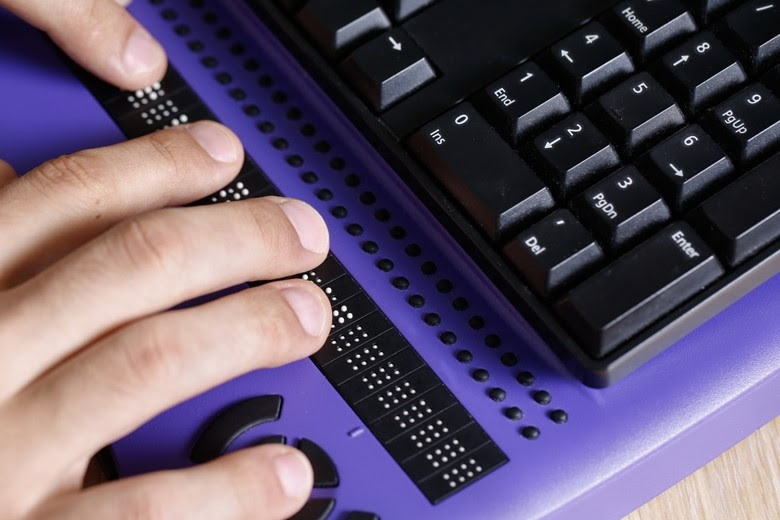Apr 2 2020
Refreshable braille displays translate information from computer screens into raised characters, often along the bottom of a keyboard. But this technology can cost thousands of dollars and is limited, typically displaying a string of characters much shorter than most sentences. Researchers now report an improved material that could take these displays to the next level, allowing those who are blind or who have low vision to more easily understand text and images, while lowering cost.
 A new material could improve current braille displays (shown above) by increasing the amount of information conveyed, while making them more durable and less costly. Image Credit: zlikovec/Shutterstock.com
A new material could improve current braille displays (shown above) by increasing the amount of information conveyed, while making them more durable and less costly. Image Credit: zlikovec/Shutterstock.com
The researchers are presenting their results through the American Chemical Society (ACS) SciMeetings online platform.
“With more development, we think this new material’s properties could make it possible to create much higher resolution devices, perhaps even those capable of displaying information other than text, such as diagrams or maps,” says Julia R. Greer, Ph.D., the project’s principal investigator.
Braille displays currently on the market rely on the piezoelectric effect: A small crystal expands when voltage is applied to it, pushing a pin upward to create a dot. A single character, such as a letter, is encoded by up to eight such dots. Devices on the market typically display at most 80 characters at a time, or a fraction of a sentence or tweet.
Researchers have recently turned their attention to electroactive polymers (EAPs) as a type of material that could improve these displays. EAPs could display much more information than conventional devices, as well as a greater diversity of it. What’s more, the devices could be easier and cheaper to manufacture. That promise has yet to materialize, however, and EAP-based displays have encountered many issues, including the need for high voltage to operate and poor durability.
Greer’s team at the California Institute of Technology (Caltech) conceived of an entirely new type of EAP based on polyionic complexes, and in the summer of 2019, the group began working on a way to synthesize the material. An improved EAP could help braille technology catch up to that used by those with sight, says Rob Learsch, who was a graduate student in the lab at the time. “Braille technology hasn’t changed much since the 1980s,” he notes. “I think it would be remarkable to allow everyone to benefit from the revolution in miniaturization and computation that has occurred.”
Whereas conventional EAPs rely on electrical charge accumulating on electrodes, the new material contains positively and negatively charged polymers combined into a random network of chains connected at nodes. The negatively charged polymers form a solid scaffold to which the positive ones bind, acting like rubber bands that pull everything together. Applying an electrical field unravels these connections, as if cutting the rubber bands, and causes the material to expand outward. The polyionic EAP requires much less voltage, and is more efficient and resilient, than conventional EAPs.
Learsch has since joined the lab of Julia Kornfield, Ph.D., at Caltech, where he and others are continuing to study the material’s properties and develop it to the point where it can be used within braille displays and, perhaps, offer new functionality for these devices. Because the material can act like a capacitor, generating an electrical signal when pressure is applied, it could be used to build braille displays that respond to touch, much like the screen of a smart phone or tablet.
The material also could be used for other applications. If controlled by precise electrical fields, Learsch says he could foresee it opening and closing a robotic joint or gripper. “There is a lot of research to be done to get us from where we are now to these types of products, but that is all part of our long-term vision,” Learsch says.
The researchers acknowledge support from the National Science Foundation Graduate Research Fellowship Program and the Department of Defense Vannevar Bush Faculty Fellowship.